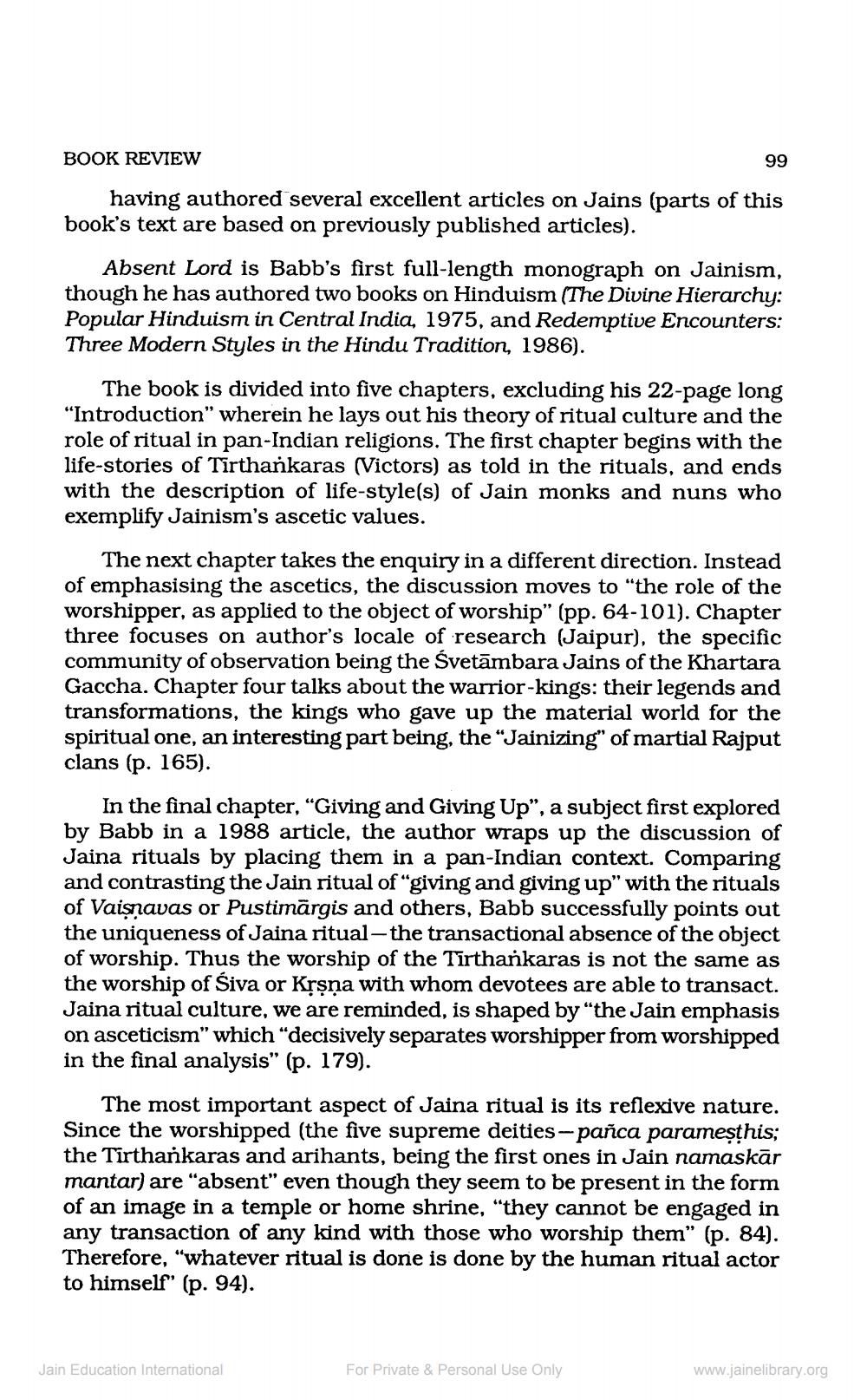________________
BOOK REVIEW
99
having authored several excellent articles on Jains (parts of this book's text are based on previously published articles).
Absent Lord is Babb's first full-length monograph on Jainism, though he has authored two books on Hinduism (The Divine Hierarchy: Popular Hinduism in Central India, 1975, and Redemptive Encounters: Three Modern Styles in the Hindu Tradition, 1986).
The book is divided into five chapters, excluding his 22-page long "Introduction" wherein he lays out his theory of ritual culture and the role of ritual in pan-Indian religions. The first chapter begins with the life-stories of Tirthankaras (Victors) as told in the rituals, and ends with the description of life-style(s) of Jain monks and nuns who exemplify Jainism's ascetic values.
The next chapter takes the enquiry in a different direction. Instead of emphasising the ascetics, the discussion moves to "the role of the worshipper, as applied to the object of worship" (pp. 64-101). Chapter three focuses on author's locale of research (Jaipur), the specific community of observation being the Svetāmbara Jains of the Khartara Gaccha. Chapter four talks about the warrior-kings: their legends and transformations, the kings who gave up the material world for the spiritual one, an interesting part being, the “Jainizing" of martial Rajput clans (p. 165).
In the final chapter, "Giving and Giving Up", a subject first explored by Babb in a 1988 article, the author wraps up the discussion of Jaina rituals by placing them in a pan-Indian context. Comparing and contrasting the Jain ritual of “giving and giving up" with the rituals of Vaişnavas or Pustimārgis and others, Babb successfully points out the uniqueness of Jaina ritual- the transactional absence of the object of worship. Thus the worship of the Tirthankaras is not the same as the worship of Siva or Krsna with whom devotees are able to transact. Jaina ritual culture, we are reminded, is shaped by "the Jain emphasis on asceticism" which “decisively separates worshipper from worshipped in the final analysis” (p. 179).
The most important aspect of Jaina ritual is its reflexive nature. Since the worshipped (the five supreme deities - pañca paramesthis; the Tirthankaras and arihants, being the first ones in Jain namaskar mantar) are "absent" even though they seem to be present in the form of an image in a temple or home shrine, "they cannot be engaged in any transaction of any kind with those who worship them” (p. 84). Therefore, "whatever ritual is done is done by the human ritual actor to himself" (p. 94).
Jain Education International
For Private & Personal Use Only
www.jainelibrary.org




